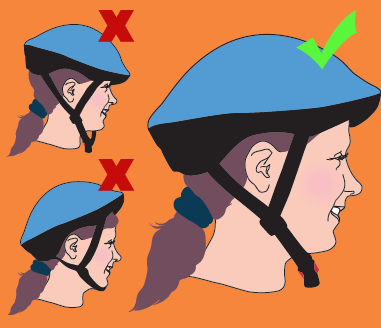Think with your helmet
Did you know?
- On average, more than 70% of cyclists treated at the Montreal General Hospital’s trauma department were not wearing a helmet when the incident occurred.
- 58% of injured cyclists admitted to the Montreal General Hospital are treated for a head injury.
- Traumatic head injury is the leading cause of death among cyclists and skateboarders.
 Proper use of a helmet would have helped reduce these risks.
Proper use of a helmet would have helped reduce these risks.
- Helmets are designed to absorb the shock from a fall or blow, and protect your head and brain from injury.
- When choosing a helmet, ensure it fits correctly.
Each type of helmet is designed to offer the best possible protection for the sports in question.
- Wearing a helmet can reduce the risk and severity of a head and brain injury by 60% to 85%.
Click here to access the pamphlet.
How a helmet should be fitted
When fitted properly, a helmet can be both extremely comfortable, and effective at protecting from injury. The helmet should be snug, and should not move around easily.
The FRONT PART of the helmet should cover your forehead and sit about the width of two fingers above your eyebrows.
The BACK should cover the prominent bump at the back of your head. Ski and snowboard helmets should not reach the back of the neck.
Place the side STRAPS so that one part is in front of the ear and the other behind, joining right below the ear lobe.
Adjust the side straps prior to connecting the CHINSTRAP The chinstrap should fit snugly, but should allow for two fingers to fit between it and your chin..
Once the straps are adjusted, recheck the fit of the helmet. It should not move around easily.
For children, choose a helmet that fits at the time of purchase. Their heads do not grow as rapidly as the rest of them, so do not buy one assuming that they will grow into it.
